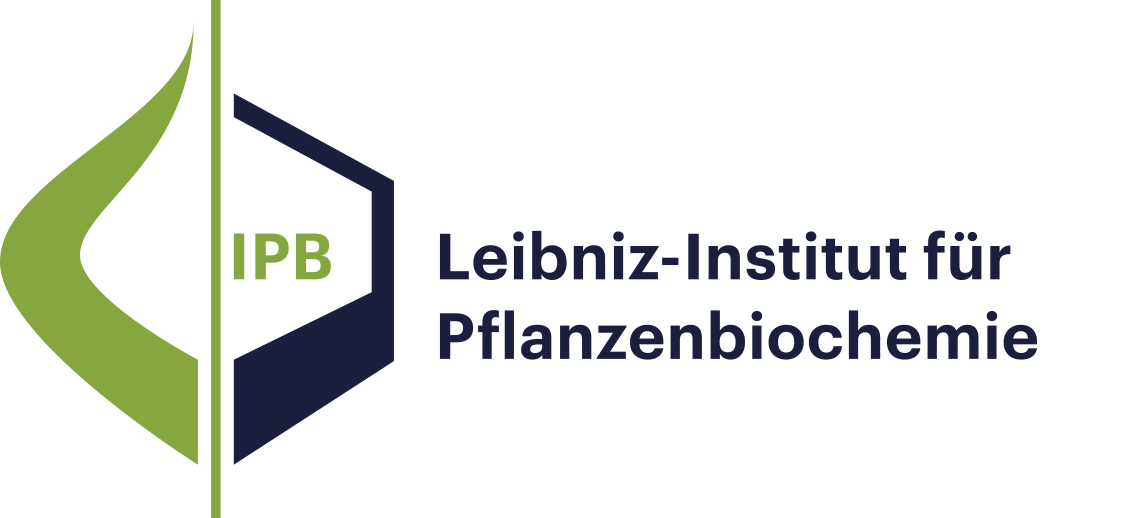- Ergebnisse als:
- Druckansicht
- Endnote (RIS)
- BibTeX
- Tabelle: CSV | HTML
Publikation
Publikation
Bücher und Buchkapitel
Leitbild und Forschungsprofil
Molekulare Signalverarbeitung
Natur- und Wirkstoffchemie
Biochemie pflanzlicher Interaktionen
Stoffwechsel- und Zellbiologie
Unabhängige Nachwuchsgruppen
Program Center MetaCom
Publikationen
Gute Wissenschaftliche Praxis
Forschungsförderung
Netzwerke und Verbundprojekte
Symposien und Kolloquien
Alumni-Forschungsgruppen
Publikationen
Publikation
Betalains replace the anthocyanins in flowers and fruits of plants of most families of the Caryophyllales. Unexpectedly, they were also found in some higher fungi. Whereas the anthocyanin-analogous functions of betalains in flower and fruit colouration are obvious, their role in fungi remains obscure. The nature of newly identified betalains as well as final structure elucidation of earlier putatively described compounds published within the last decade is compiled in this report. Recent advances in research on betalain biosynthesis is also covered, including description of some ‘early’ reactions, i.e. betalain-specific dopa formation in plants and fungi and extradiolic dopa cleavage in fungi. Work on betalain-specific glucosyltransferases (GTs) has given new insights into the evolution of secondary plant enzymes. It is proposed that these GTs are phylogenetically related to flavonoid GTs. It was found that the decisive steps in betalain biosynthesis, i.e. condensation of the betalain chromophore betalamic acid with cyclo-dopa and amino acids or amines in the respective aldimine formation of the red-violet betacyanins and the yellow betaxanthins, are most likely to be non-enzymatic. Betalains have attracted workers in applied fields because of their use for food colouring and their antioxidant and radical scavenging properties for protection against certain oxidative stress-related disorders.This review describes structure elucidation of betalains published within the last decade. Recent advances in betalain biosynthesis are also covered, i.e. enzymatic steps of ‘early’ (dopa formation) and ‘late’ reactions (glucosylation and acylation) as well as non-enzymatic steps (cyclo-dopa and aldimine formation).
Publikation
Upon irradiation with elevated light intensities, the ice plant (Mesembryanthemum crystallinum) accumulates a complex pattern of methylated and glycosylated flavonol conjugates in the upper epidermal layer. Identification of a flavonol methylating activity, partial purification of the enzyme, and sequencing of the corresponding peptide fragments revealed a novel S-adenosyl-l-methionine-dependent O-methyltransferase that was specific for flavonoids and caffeoyl-CoA. Cloning and functional expression of the corresponding cDNA verified that the new methyltransferase is a multifunctional 26.6-kDa Mg2+-dependent enzyme, which shows a significant sequence similarity to the cluster of caffeoyl coenzyme A-methylating enzymes. Functional analysis of highly homologous members from chickweed (Stellaria longipes), Arabidopsis thaliana, and tobacco (Nicotiana tabacum) demonstrated that the enzymes from the ice plant, chickweed, and A. thaliana possess a broader substrate specificity toward o-hydroquinone-like structures than previously anticipated for Mg2+-dependent O-methyltransferases, and are distinctly different from the tobacco enzyme. Besides caffeoyl-CoA and flavonols, a high specificity was also observed for caffeoylglucose, a compound never before reported to be methylated by any plant O-methyltransferase. Based on phylogenetic analysis of the amino acid sequence and differences in acceptor specificities among both animal and plant O-methyltransferases, we propose that the enzymes from the Centrospermae, along with the predicted gene product from A. thaliana, form a novel subclass within the caffeoyl coenzyme A-dependent O-methyltransferases, with potential divergent functions not restricted to lignin monomer biosynthesis.
Bücher und Buchkapitel
IntroductionA Summary of Bioactive Glycosylated Secondary MetabolitesAgents that Interact with DNAEnediynesBleomycinsDiazobenzofluorenesAnthracyclinesPluramycinsAureolic AcidsAgents that Interact with RNAOrthosomycinsMacrolidesAminoglycosidesAmicetinsAgents that Interact with Cell Walls and Cell MembranesNon‐Ribosomal PeptidesPolyenesSaccharomicinsAgents that Interact with ProteinsIndolocarbazolesCoumarinsBenzoisochromanequinonesAvermectinsAngucyclinesCardiac GlycosidesLignansAnthraquinone GlycosidesGinsenosidesGlycoalkaloidsGlucosinolatesAgents that Interact with Other (or Undefined) TargetsPlant PhenolicsMono‐ and Triterpenoid GlycosidesPlant Polymeric Natural GlycosidesConclusionsReferences

